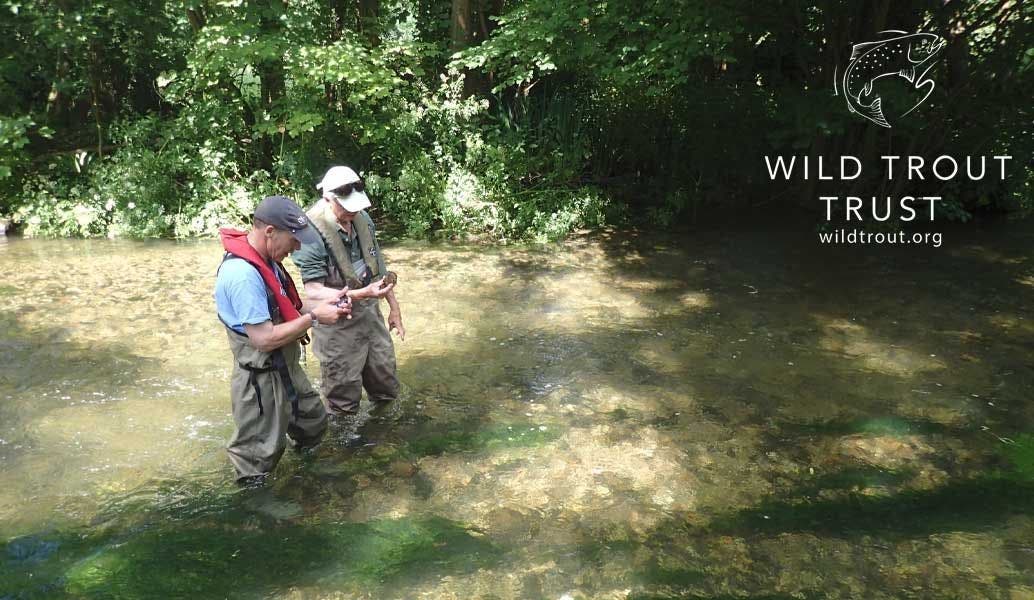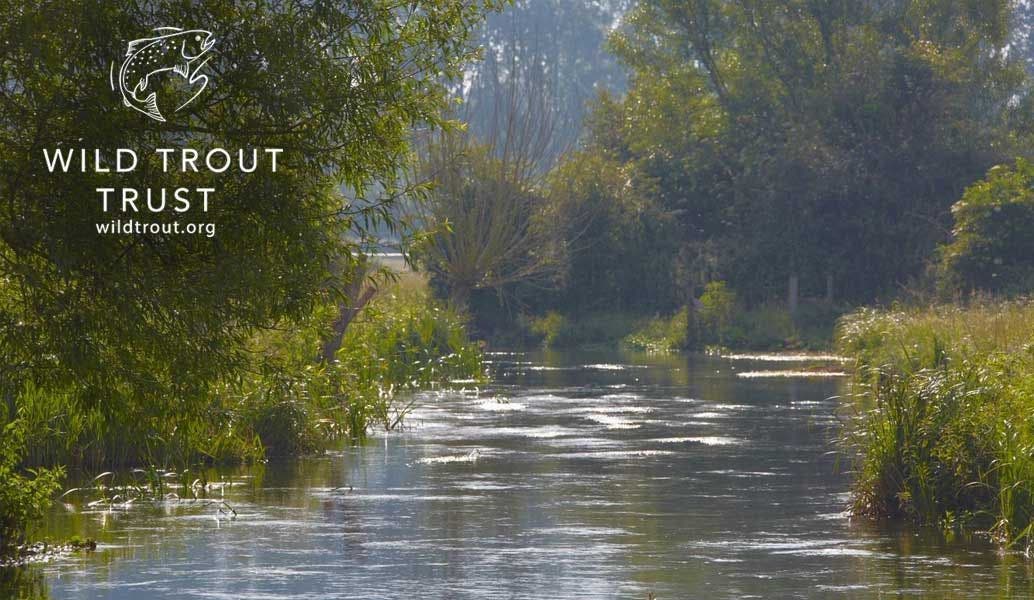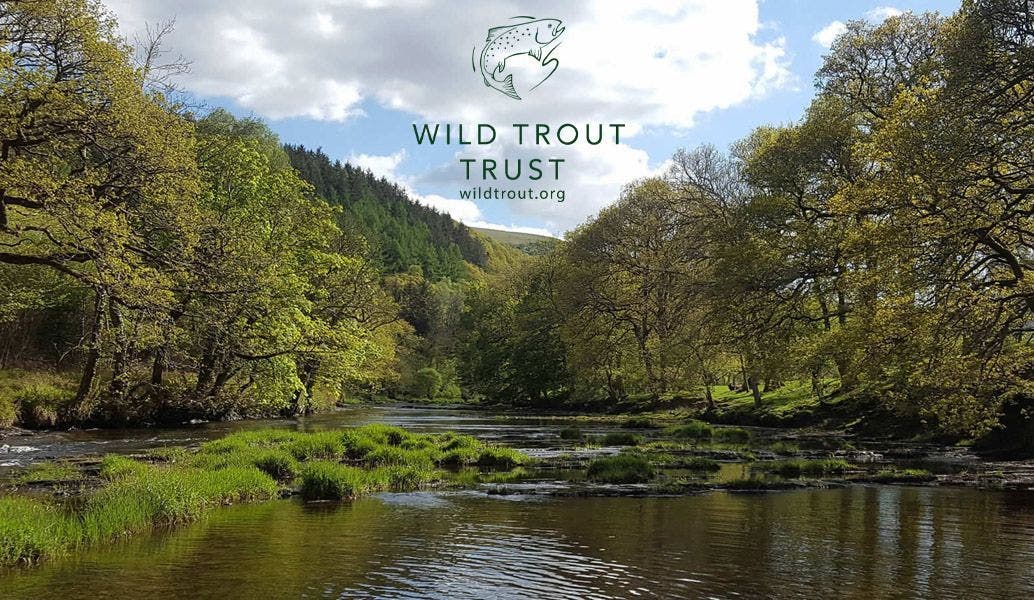In my previous article, ‘making our rivers healthy again’, I talked about how the Wild Trout Trust is focused on improving the health of our rivers by restoring their physical diversity, which in turn improves their ecological richness. This time, I’ll take a more detailed look at some of our recent projects where we’ve been putting these principles into practice.
As a small conservation charity, WTT works with landowners and fishing clubs all over the UK and Ireland, offering practical advice and in-river projects to make life better for wild trout and many other species. Most of our projects, including the ones below, have begun with free advice – a walkover and discussion on the riverbank, followed by a report with recommendations. At the last count, around 80% of our reports turned into practical action of some kind, usually in partnership with lots of other organisations!
In recent years, we’ve been getting our teeth into delivering bigger and bigger projects. So, here’s a selection of some of the work we’ve done to make our rivers more natural again.
As you’ll see, it’s all about recreating – and reconnecting – a diversity of habitats which have previously been simplified or disconnected out of existence, but make all the difference when their natural processes are started again. Pools and riffles, scour and deposition, fast and slow areas of water, all the right things happening in the right places
DUNSTON BECK, LINCOLNSHIRE
Historically, Lincolnshire’s limestone becks would have meandered down from the higher ground of the Lincolnshire ridge to low-lying fenland areas in the east. By the time of our Advisory Visit to the Dunston Beck in 2014, the stream had been degraded by arable farming for many years – but the landowners, Beeswax Dyson Farming, saw the potential for getting their arrow-straight river back into a more natural shape.
The project started with stripping away large amounts of topsoil to reconnect the beck with its floodplain, complete with scrapes, ponds and backchannels for a wide range of species including wading birds like snipe. Flowing between these new features, the channel of the beck was carefully returned to a sinuous, wiggly shape, with gravel riffles added as spawning habitat – and wild trout were spotted in the pools below the riffles not long after completion!
Find out more about our Dunston Beck project on the WTT website:
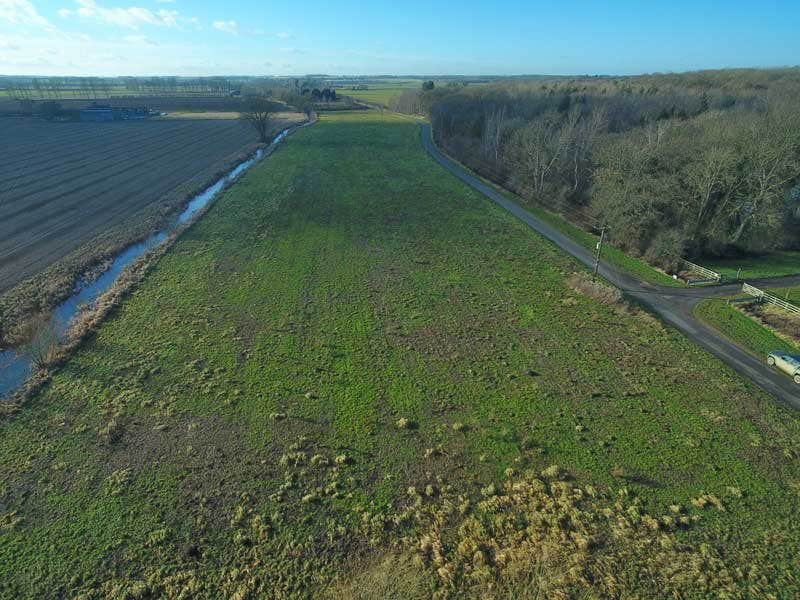

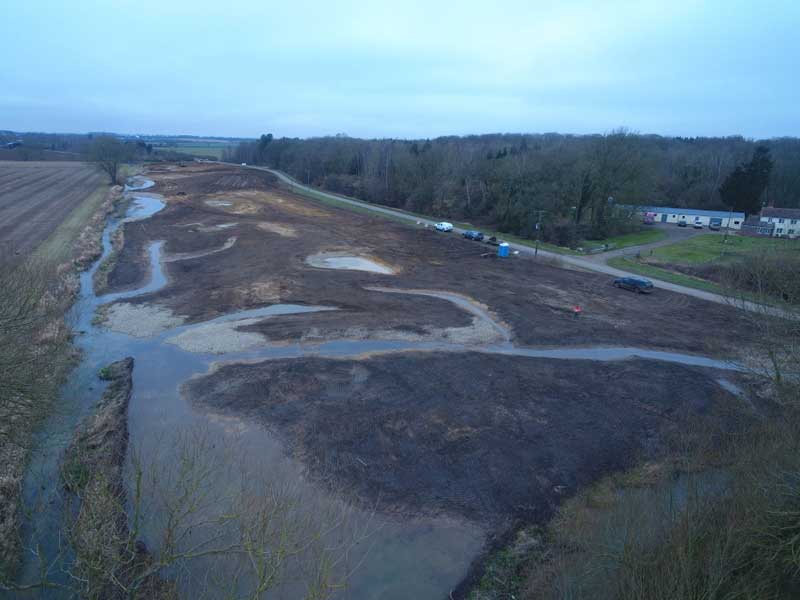

SCOTTON WEIR, RIVER NIDD
When an old milling weir has been present on a river for more than 100 years, it may have trapped hundreds of tonnes of gravel and other sediment which would otherwise have washed gradually downstream to keep trout and salmon spawning areas topped up and make habitat for many other species of birds, fish and insects. Re-starting these kinds of natural processes is just as important as removing an obstruction to fish passage, and it was certainly on our minds when we started work on Scotton weir in summer 2002.
Standing 75 metres wide and 4 metres high at the entrance to Nidd Gorge, Scotton weir was the largest weir removal in the UK at that time, and we managed it in just 45 days. Helpfully, a previous storm had breached the sluice gates on one side, so we could see what the internal structure looked like, and the weir wasn’t protecting gas mains or water pipes running under the river (which is something else we often come across). Without the weir, 800m of river upstream of this area can also now run swift and shallow again – adding even more varied and connected habitat which had previously been drowned under slow, sluggish, silty water.
Find out more about our Scotton weir removal project:
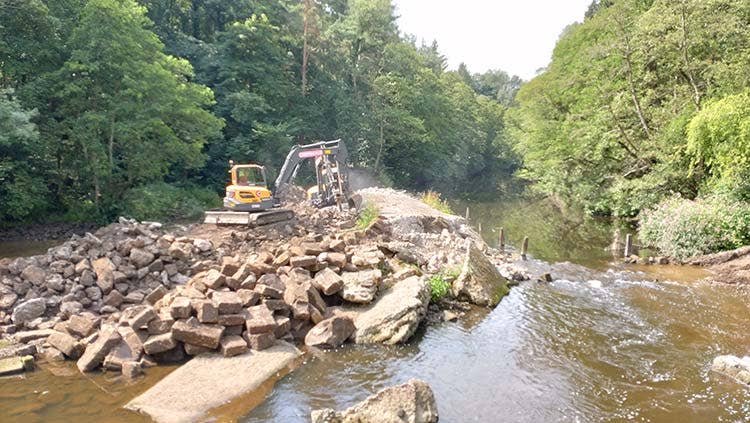

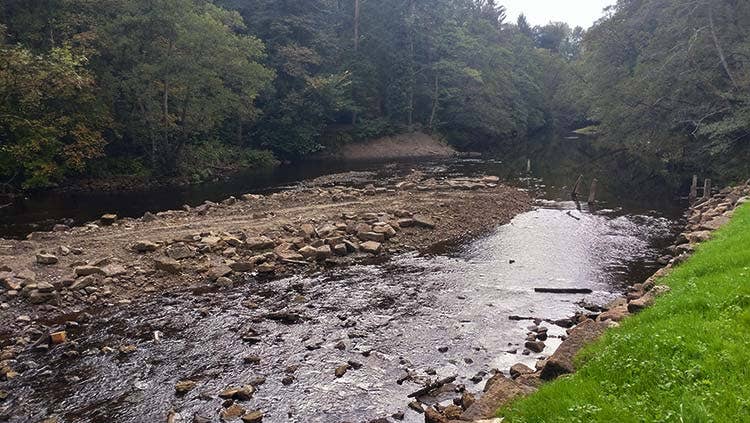

DUFFIELD, RIVER ECCLESBOURNE
Another of our recent large-scale weir removals took place at Snake Lane in Duffield on the River Ecclesbourne, a tributary of the Derbyshire Derwent. In the past few years, watching salmon spawning below this barrier had become a local attraction, as weirs further downstream were gradually demolished or bypassed, and in 2022 it was time to address this one too.
After temporarily diverting the flow of the river via an old mill channel, we were safely able to remove a large volume of accumulated sediment from behind the weir, before slicing the solid concrete weir into chunks with diamond-tipped cutting equipment. The single 2.4 metre gradient drop was then spread out over 120 metres of channel with a series of four rock rapids – each constructed from large boulders with gravel spread over the top of them. For many species of fish, this is a much better alternative to a manufactured or ‘technical’ fish pass built of baffles, since it gives the river its wiggles back on the smallest possible scale, and makes it passable for even the weakest-swimming fish.
Just weeks after this work, there was a bittersweet epilogue: a spawned-out hen salmon was found upstream of the old weir, having apparently laid her eggs, hopefully the first of many new generations to make it past this previous habitat bottleneck.
Find out more about our Snake Lane weir removal project:
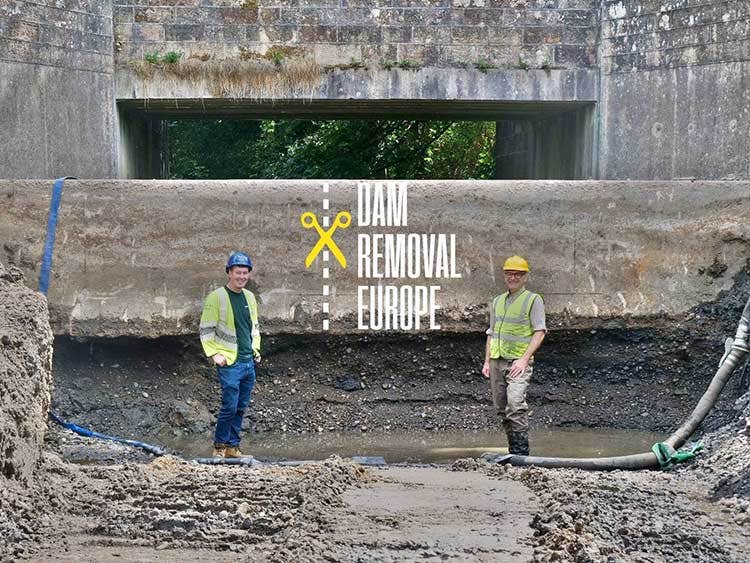

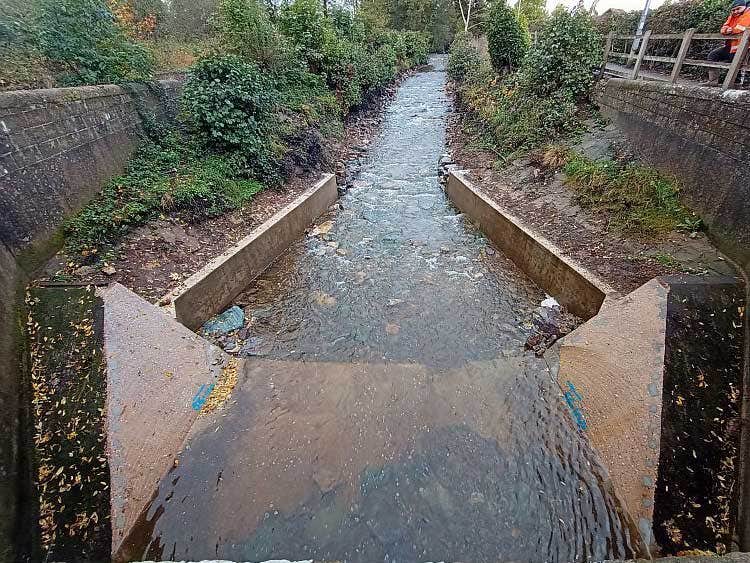

LWM IN THE BOURNE RIVULET
In the course of our work on the chalk streams, one of the best ways we’ve found to put the wiggles back into over-simplified habitat is just to add wood (also known as Large Woody Material, or LWM). Low gradient rivers like chalk streams often lack the energy to restart their own natural processes – especially when water is lacking! - but felling naturally gnarly and complex trees into the channels can begin scouring away silt from spawning gravels almost immediately.
For example, in two projects we’ve done recently on the Bourne Rivulet (in the wading boot steps of Harry Plunket Greene) we’ve worked with landowners to add whole trees to their rivers - in some cases simply pushing them into the channel, as if they’ve been put there by a storm, or using heavy machinery to shove large root wads into just the right position.
Mimicking nature in this way easily helps to vary river currents so that they scour deeper runs, or spill out into their floodplains, and brings benefits for all kinds of species, including kingfishers which commonly nest in tipped-over root plates.
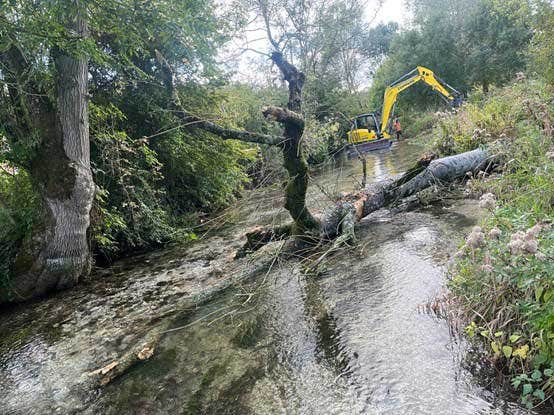

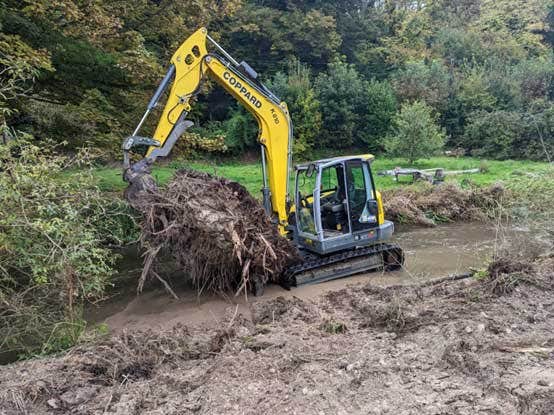

So, as we’ve said before: all things being equal, if we can try to restore physical diversity in our rivers, ecological diversity will follow.
And our rivers will also be more resilient in the face of future challenges like water quality problems and high or low flows exacerbated by climate change.
To find out more about the Wild Trout Trust, please visit www.wildtrout.org

